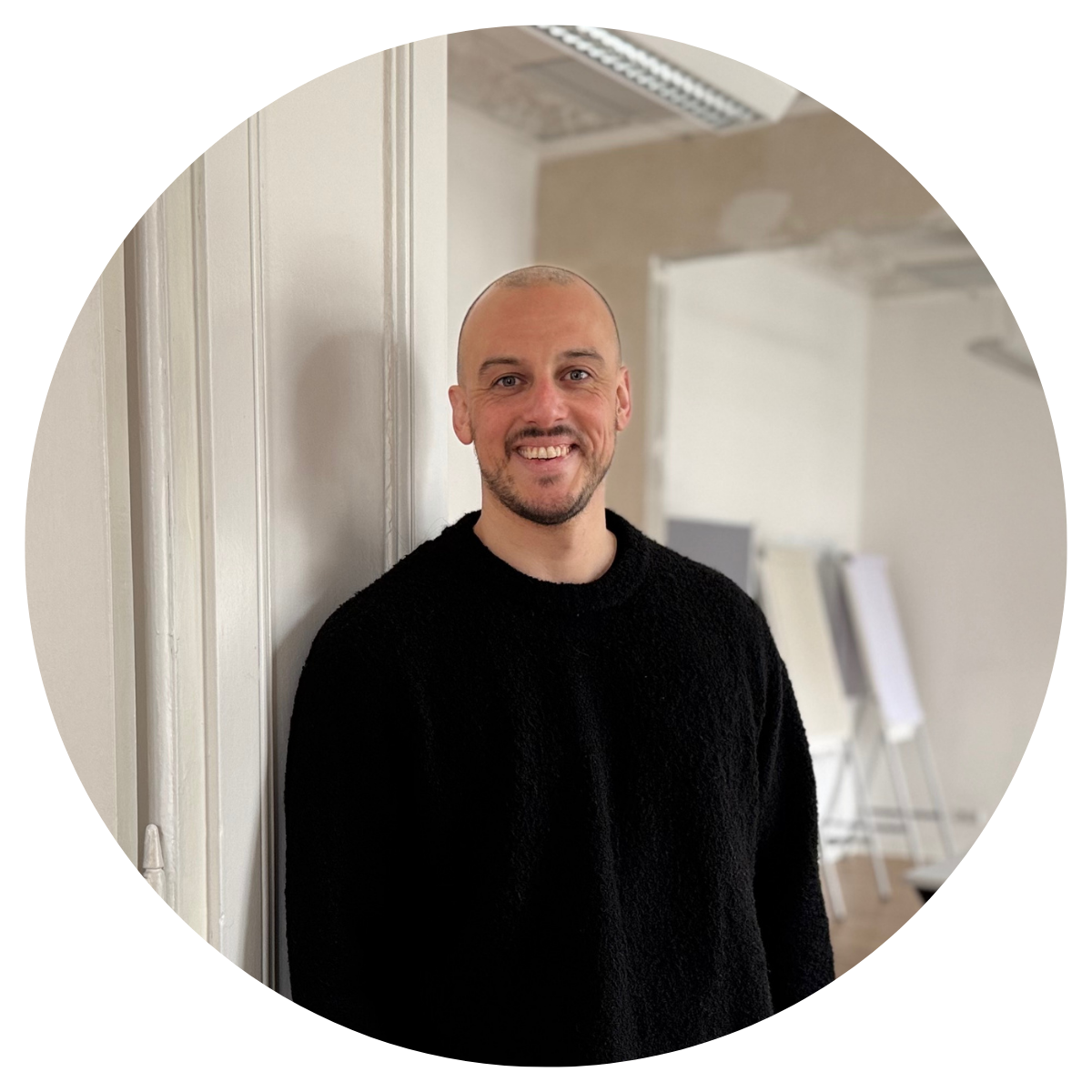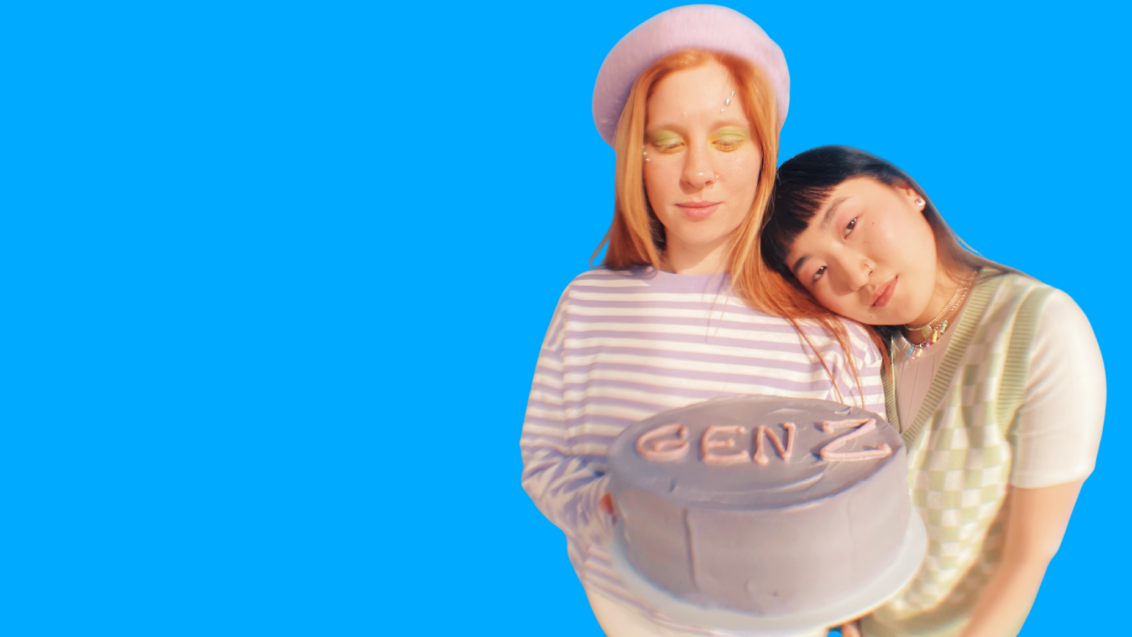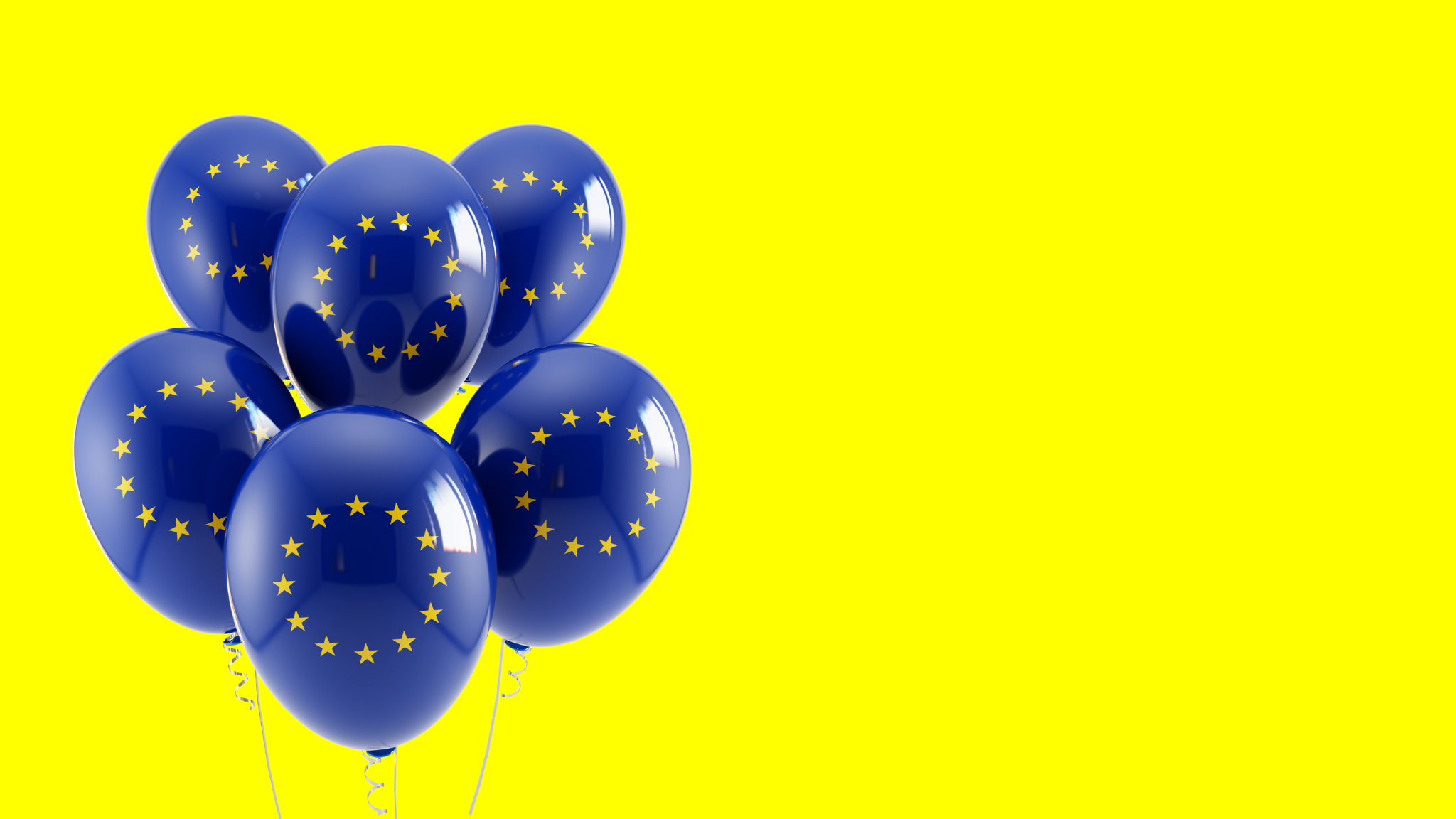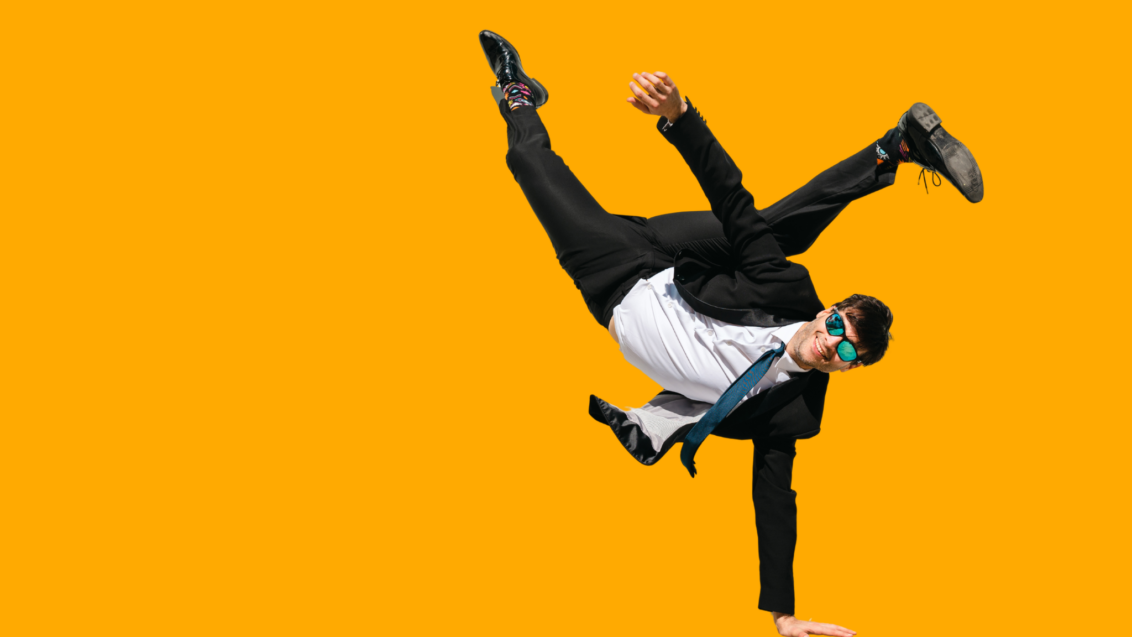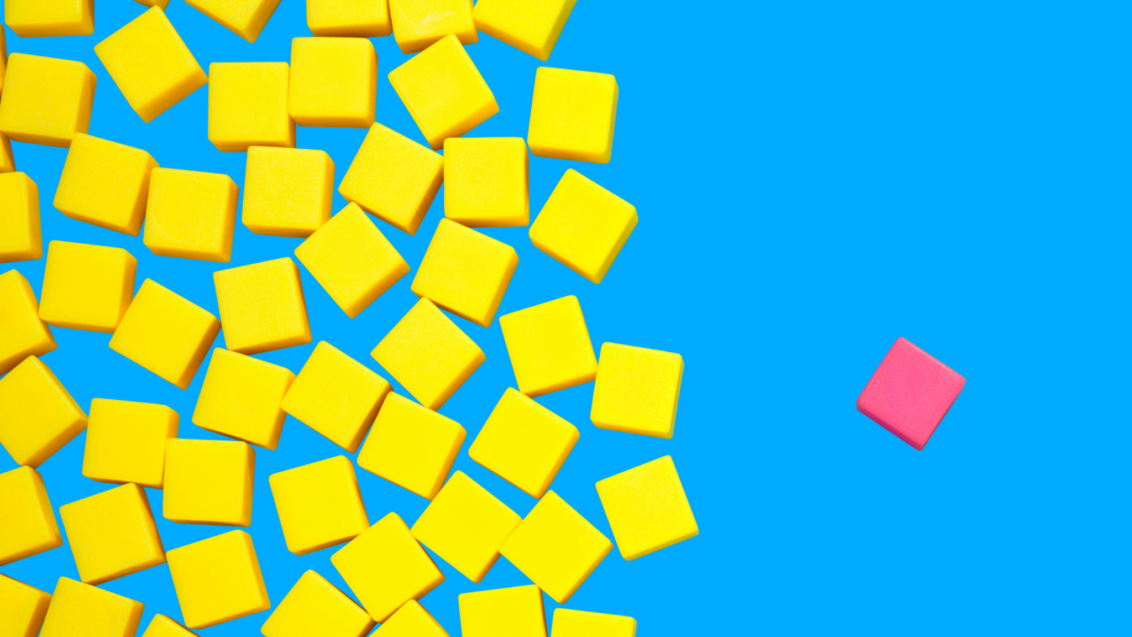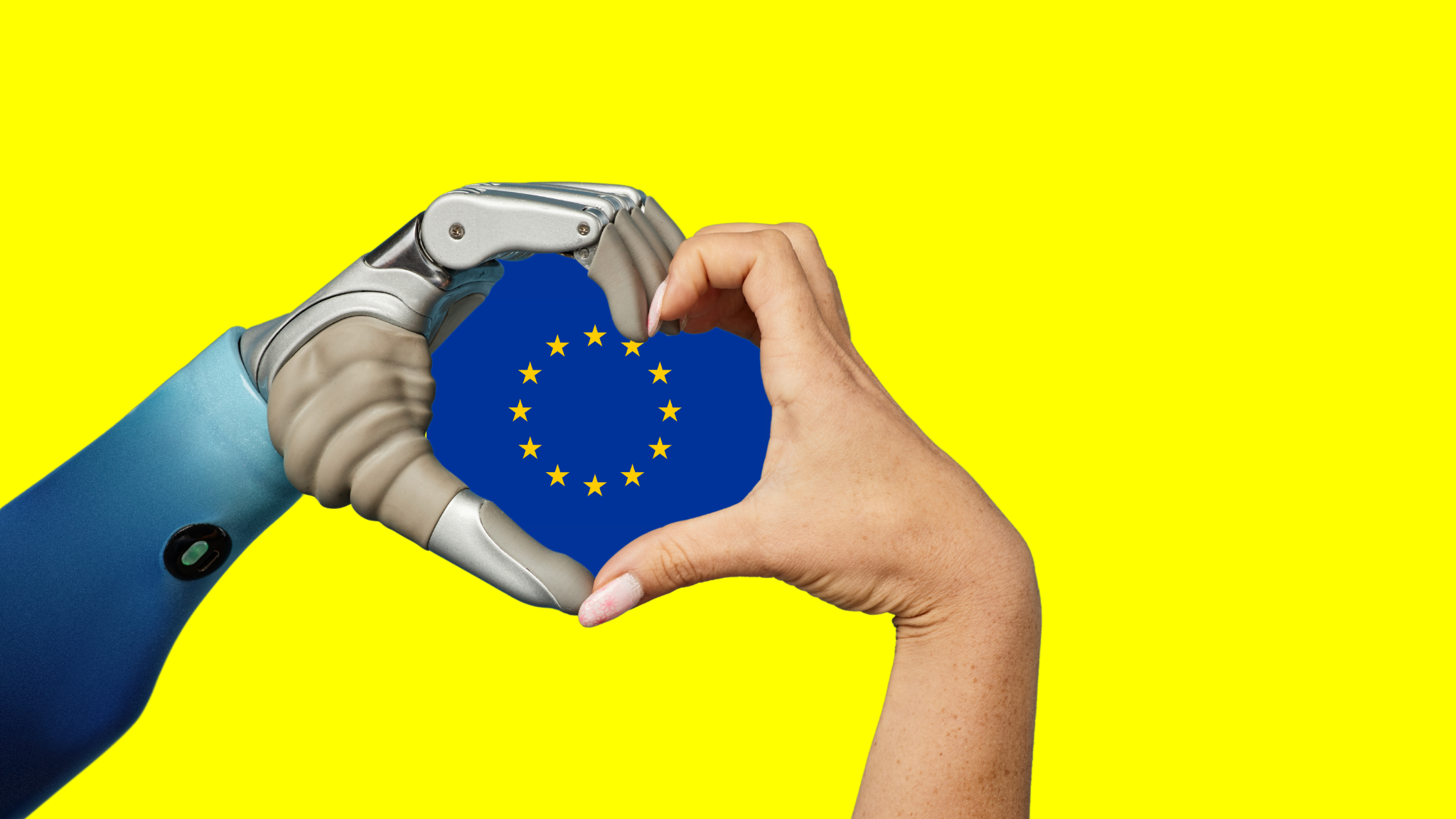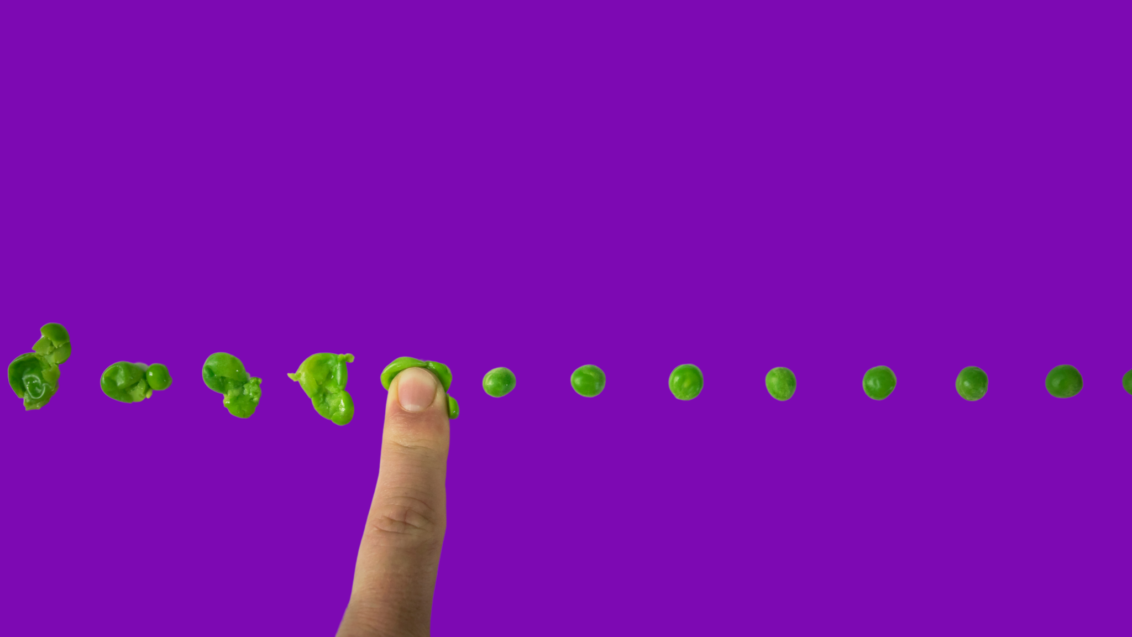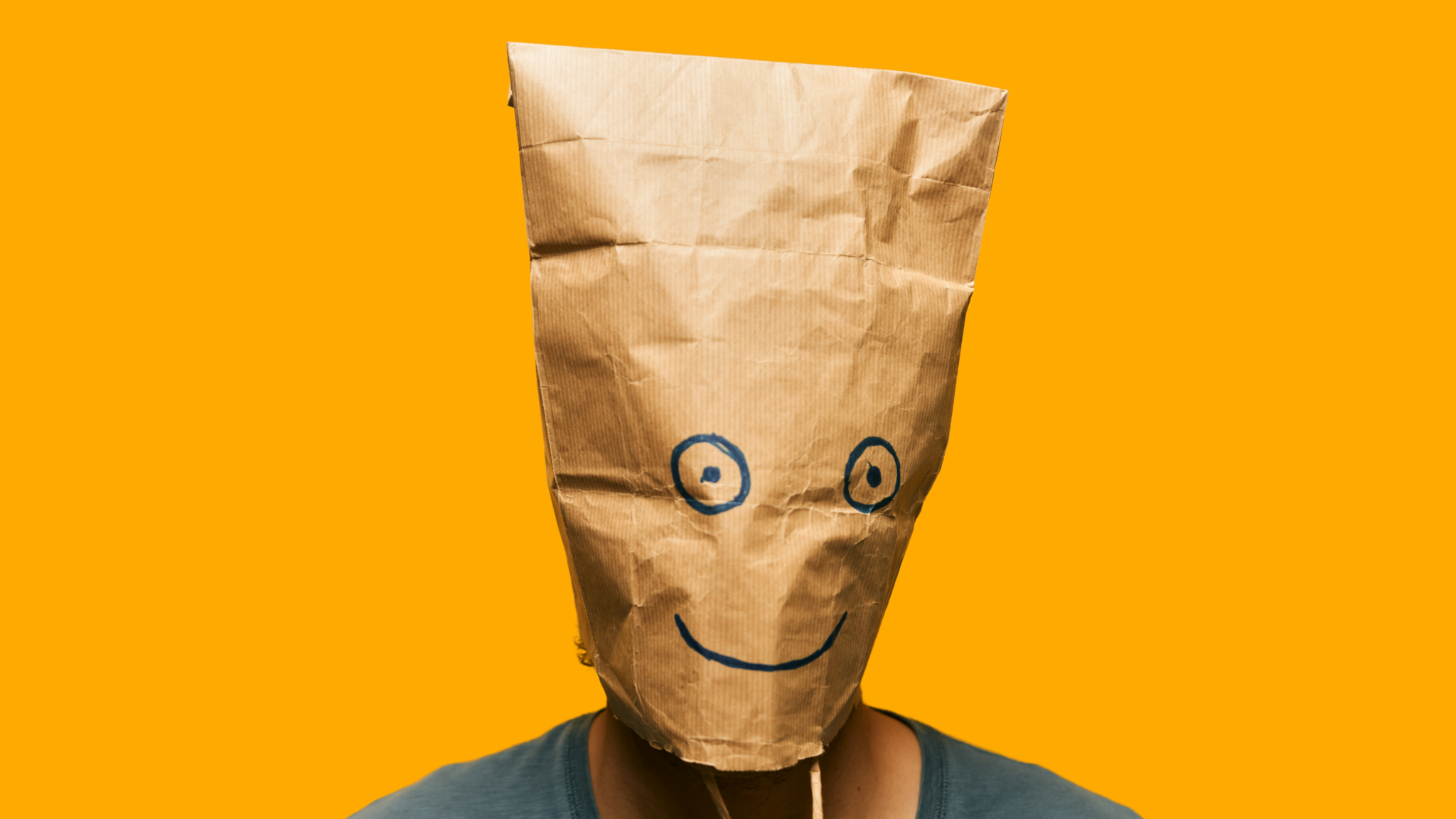Bias out. ROI in: The unexpected win of AI regulation
Looking back on 2025: How AI in recruiting went from being a mere tool to a driver of the future
February 2025. While some companies are frantically reviewing their AI-supported recruiting processes to meet the EU AI Act requirements at the last minute, others are remaining calm. They have used the previous months not only to ensure compliance, but also to fundamentally rethink how technology should be used in recruiting.
Twelve months later, it will become clear that these different approaches have divided the industry into those who truly understand AI in recruiting and those who primarily view it as a technical and/or compliance challenge.
2025: The year of coming of age
The beginning of the year was marked by uncertainty: How do we meet the AI Act requirements? Will we have to shut down our systems? How expensive will that be? But over the course of the year, the most successful companies realized that regulation was not the problem, but rather the solution to the real problem: non-transparent, unfair recruiting processes that overlook potential and reproduce bias.
The pioneers of the HR industry saw the requirements of the EU AI Act as an opportunity. They have not only made their recruiting technology compliant, but also fundamentally improved it. Saint Sass, for example, one of Europe’s most sought-after fashion labels, switched to data-based personality analysis during a critical growth phase and was able to fill five key positions in just four weeks, 50% faster than the startup average, with 50% fewer interviews. Or the CHAPTERS Group, an investment company that specifically builds start-up teams. It uses AI-supported assessments to identify who really brings entrepreneurial thinking and action to the table – and achieved a 25% higher interview-to-hire ratio in 2025.
What these success stories have in common is that they have understood that transparency, traceability, and human oversight are not bureaucratic hurdles, but quality characteristics of excellent recruiting.
The learning curve of the HR industry
2025 was also a year of painful lessons. Companies that had implemented AI tools hastily and without careful consideration had experiences they would rather have avoided: algorithms that reinforced existing biases instead of minimizing them. Black box systems that no one in the company really understood. Candidates who felt devalued by non-transparent processes and withdrew their applications.
The industry has learned that not all AI is the same. The crucial difference lies in the underlying technology and philosophy. While CV parsing systems enable historical patterns and, as a result, often discrimination, language-based personality analysis takes a different approach. It does not evaluate which universities are listed on a resume or which company names are impressive, but rather how people communicate, think, and solve problems. It reveals what traditional methods overlook: intrinsic motivation, teamwork skills, willingness to learn, and entrepreneurial thinking.
The ROI of ethical AI
Responsible AI is not only ethically imperative, it also makes good business sense. By 2025, more and more companies will have recognized this. In times when a bad hire can quickly cost six-figure sums and a shortage of skilled workers is becoming a limiting factor for growth, quality of hire is the decisive metric.
Companies that invested in transparent, explainable AI systems in 2025 report measurable improvements: shorter time-to-hire with higher accuracy, lower turnover in the first twelve months, and more diverse teams without pressure to meet quotas. The ROI comes not from maximum automation, but from better decisions.
The companies that understand this are likely to win the war for talent. Not despite the AI Act requirements, but because of them.
Outlook for 2026: Mastering technology and human understanding
What does this mean for 2026? The fundamental question of “Do we use AI in recruiting?” has been answered. The focus is shifting to “How good is our AI?” Quality standards for recruiting technology will become established, not only through regulation, but also through measurable business impact.
2026 will be the year when AI becomes invisible in recruiting, but in the best sense. It will become as commonplace as email, but its quality will be the decisive differentiating factor. The leading companies will be those that think beyond compliance and use AI strategically: for potential prediction instead of CV screening, for team fit analyses instead of isolated individual assessments, for holistic people analytics instead of stand-alone solutions.
Recruiters will continue to evolve into curating decision-makers who combine data-driven insights with human judgment. Empathy, contextual understanding, and strategic thinking will become more important, not less. The best HR departments will be those that master technology and people skills to an equal degree.
The foundation has been laid
2025 was the year that set the course. Companies that are now on the right side of this development – with transparent, fair, effective AI – have a competitive advantage that will be decisive in 2026. While they are already working on the next generation of recruiting innovation, others are still struggling with the basics.
The year AI came of age in recruiting is also the year recruiting became more human. This apparent paradox is the real innovation: technology at the service of better human decisions.
What a wonderful prospect for the coming year.
Prof. Dr. Florian Feltes
Prof. Dr. Florian Feltes is co-founder and co-CEO of zortify and a forerunner in AI-supported HR innovation. Together with his team, he develops intelligent personality diagnostics and helps companies identify the perfect candidates—without expensive assessments and without bias. His vision: a world in which every company can effortlessly form high-performance teams and create work environments that allow human potential to flourish.
1 in 700 is not enough! – How companies really hire based on skills
Three-quarters of companies have announced in recent years that they will evaluate candidates more on the basis of their actual skills and competencies rather than formal qualifications. However, a Harvard study shows a clear discrepancy between promises and reality.
Predicting retention: How companies can avoid costly employee turnover
In many organizations, the actual costs of turnover are overlooked in recruitment strategies. While enormous resources are invested in job profiles, hiring funnels, and assessment processes, one crucial question remains unanswered: Will the person hired today still be with the company in 18 months?
Who’s behind that perfect prompt?
How talent stands out and companies recognize who really fits.
The application sounds flawless. Every word is perfect. Every phrase hits the right note. And that’s exactly the problem. Since ChatGPT & Co. have reached the application process, documents are becoming increasingly similar.
1 in 700 is not enough!
– How companies really hire based on skills
Three-quarters of companies have announced in recent years that they will evaluate candidates more on the basis of their actual skills and competencies rather than formal qualifications. However, the Harvard study “Skills-Based Hiring: The Long Road from Pronouncements to Practice” shows a clear discrepancy between promises and reality: of all new hires in 2023, less than one in 700 was the result of having degree requirements removed.
This figure is not a setback, but a reflection: it highlights how much potential remains untapped – and how much growth is possible when companies consistently focus on personality and skills.
Research by Harvard Business School and the Burning Glass Institute also impressively shows where this journey can lead. Companies that have already made the transition — the so-called “leaders,” around three percent of the market — are hiring 18% more people without academic degrees in roles that previously required one. Above all, they achieve significantly higher quality hires and higher retention rates. Joseph B. Fuller (HBS) emphasizes that simply changing job ads is not enough. It requires a rethink among hiring managers, in corporate culture, and in hiring processes. The key insight: transformation does not come from better intentions, but from better systems.
Analyze personality early in the process
The first step toward recruiting that reveals a person’s true potential is to use technology-based personality diagnostics early in the process. Whether before, during, or after CV screening, the goal is to identify mindsets, cognitive abilities, character traits, and associated specific skills and development opportunities based on data before human selection decisions are made.
A multi-measure approach that combines several dimensions is particularly effective. 92% of companies that take this approach report higher satisfaction with their hires. This is a clear indication of what is possible when personality is treated not as a soft factor but as a strategic variable.
Understanding outcomes instead of biographies
This change can only succeed if there is a prior definition of what success in a role actually means. Many companies underestimate this phase. The “leader” companies from the study mentioned at the beginning take a different approach: they don’t ask what candidates need to bring to the table, but what they should achieve in the role. This shifts the focus from formal requirements to outcomes. Key questions include:
- What thought patterns support long-term performance?
- What personality traits promote team dynamics?
- What cognitive abilities enable rapid learning?
Those who answer these questions in a structured manner will be able to identify talent that traditional processes would never have captured.
Ensure fairness and objectivity in recruiting
Even with clear success criteria, human bias remains an obstacle. We unconsciously favor people who are similar to us. When companies remove academic filters but do not set objective criteria, bias can actually increase.
Leader companies counter this with consistent structures, including blind recruitment and standardized evaluation grids.
84% of UK companies openly admit that unconscious bias has an effect. But the difference arises when this insight is translated into systems that reveal potential rather than reinforcing subjectivity.
Scaling personality measurement with AI
AI models trained on resumes inevitably reproduce patterns based on the past. Tools based on personality and performance data, on the other hand, open up completely new possibilities. Natural language processing, which analyzes open-ended responses, recognizes patterns of thinking and communication at a depth that traditional assessments cannot capture. For companies with high application volumes – especially in IT, consulting, and financial services – this creates a scalable, objective, and fair way to reveal personality and potential without compromising quality. AI thus becomes not a decision-maker, but an enabler of better human decisions.
Closing the 1-in-700 gap
Implementing this kind of personality- and competency-based talent logic happens in several steps:
- Recruiting funnel analyses show where the 1-in-700 gap occurs
- Pilot testing for individual roles with assessments and structured interviews
- Performance evaluation after 6, 12, and 18 months provides reliable data
- Results instead of opinions reduce skepticism about new processes
- Validated assessments, trained recruiters, KPIs, and systems ensure sustainable hiring success
Measurable talent advantage
Non-degree hires in roles that previously required a degree achieve on average ten percentage points higher retention and salary increases of 25%. They show above-average motivation because they are given opportunities that would traditionally have been denied to them. For companies, this means better matches, more stable teams, and access to talent that the competition will continue to overlook.
Companies that understand personality as an economic value, recognize potential as a currency for the future, and design their recruiting processes so that impact, rather than biography, is the deciding factor, are very likely to come out ahead in the competition for the best talent very soon. The most successful three percent have shown how it’s done. Now companies must decide whether they want to be among the next 30% who will follow.
Prof. Dr. Florian Feltes
Prof. Dr. Florian Feltes is co-founder and co-CEO of zortify and a forerunner in AI-supported HR innovation. Together with his team, he develops intelligent personality diagnostics and helps companies identify the perfect candidates—without expensive assessments and without bias. His vision: a world in which every company can effortlessly form high-performance teams and create work environments that allow human potential to flourish.
Predicting retention: How companies can avoid costly employee turnover
In many organizations, the actual costs of turnover are overlooked in recruitment strategies. While enormous resources are invested in job profiles, hiring funnels, and assessment processes, one crucial question remains unanswered: Will the person hired today still be with the company in 18 months?
Who’s behind that perfect prompt?
How talent stands out and companies recognize who really fits.
The application sounds flawless. Every word is perfect. Every phrase hits the right note. And that’s exactly the problem. Since ChatGPT & Co. have reached the application process, documents are becoming increasingly similar.
The recruiting advantage: Why quick decisions bring in better talent
Speed in recruiting is not an operational detail, but a strategic competitive factor. Companies that take too long to make decisions systematically lose the best candidates to more agile competitors. Studies also show that longer processes do not result in better hires. On the contrary.
Predicting retention: How companies can avoid costly employee turnover
In many organizations, the actual costs of turnover are overlooked in recruitment strategies. While enormous resources are invested in job profiles, hiring funnels, and assessment processes, one crucial question remains unanswered: Will the person hired today still be with the company in 18 months?
Current data shows an average misplacement rate of 14%, and as high as 30% in junior programs. With 50 hires per year, this already results in losses well into the six-figure range. Much of this cost could be avoided if recruiting took into account not only the probability of success, but also the probability of termination.
The true cost of employee turnover
The well-known cost factors, such as recruiting expenses, onboarding, and training, are only the tip of the iceberg. In fact, depending on the role, hiring the wrong person can cost between €45,000 and €100,000, and in the case of executives, up to €300,000. The direct costs of searching for and training new employees alone add up to as much as €60,000.
Added to this are hidden costs such as:
- Loss of productivity,
- demotivated teams,
- loss of expertise, and
- damage to reputation.
Companies have it in their own hands to avoid these. This is because employees often resign not because of the job itself, but because of a mismatch between expectations and reality – patterns that would have been visible during the recruitment process.
The unsurprising exit
Current data shows that early turnover is rarely a coincidence. 14% of employees leave because the tasks do not meet their expectations, and 17% leave due to a cultural mismatch. The SHRM Global Culture Report confirms that 64% of employees who perceive their corporate culture negatively actively look for another job.
The common denominator: a mismatch between expectations, culture, and personality. These risks are predictable, however, not through intuition, but through data-based personality analysis.
Recognizing invisible red flags
Truly costly mistakes are rarely caused by obvious warning signs, but rather by personality patterns that remain invisible during interviews. AI-based methods based on the Big Five and the Entrepreneurial Capital developed by Zortify make these risks measurable.
Among other things, the Big Five show:
- how stable someone remains under pressure (emotional stability and frustration tolerance),
- whether the need for autonomy and organizational structure are compatible, and
- how well people cope with change, ambiguity, and high complexity.
Entrepreneurial Capital adds to this analysis with future-critical skills like resilience, self-efficacy, agility, and solution orientation – the very factors that determine long-term performance and retention.
In combination, the Big Five and Entrepreneurial Capital reveal the invisible red flags that trigger early attrition: personality and context mismatches, fragile stress profiles, and unrealistic expectations. AI provides a solid basis for decision-making where gut feeling fails.
Predicting retention with AI
Modern NLP-based methods analyze how people think, prioritize, and deal with uncertainty. This results in a reliable prediction for long-term retention.
Companies that use such data can reduce their misplacement rate by 30%. Often, avoiding a single misplacement pays for the entire technology investment.
Typical green flags in applicants include:
- A realistic self-assessment,
- Value congruence,
- A conscious decision to take on the specific role, and
- The ability to communicate needs and boundaries.
At the same time, companies benefit from presenting everyday work life in a blunt manner. The best talents prefer realistic descriptions. Surprises on the first day, by contrast, undermine trust and drive turnover.
The business case: Data-driven decisions save a lot of money
For a company with 50 hires, the picture is as follows:
- Mismatch rate without data-driven methods: 14%, corresponding to 7 mismatches
- Costs: 7 × 45,000 = 315,000 €
- With personality analysis: Mismatch rate 10%, corresponding to 5 mismatches
- Costs: 5 × 45,000 = 225,000 €
- Savings: 90,000 € per year with a technology investment of around 35,000 €
- ROI: 2.6x, payback in less than 5 months
In addition to the financial effects, companies benefit from more stable teams, greater knowledge retention, better performance, and employer branding that signals long-term loyalty.
What companies can do straight away
- Short term: Analyze past cases of employee turnover: What signs were already visible during the recruitment process?
- Medium term: Track retention by hiring channel and personality profile, measure cultural fit and personalize onboarding based on individual profiles.
- Strategically: Early implementation of legally compliant, transparent AI systems to minimize bias and hiring risks, especially in light of the EU AI Act.
Using AI to tackle talent shortages
The most costly mistakes in recruiting are not the candidates who drop out of the process, but those who are hired and resign a few months later. Bad hires are not an isolated HR issue, but a strategic business risk in the six-figure range.
Personality-based assessments have thus become a business-critical tool. Organizations that can predict turnover make better decisions – and win in a market where talent is the scarcest resource.
Prof. Dr. Florian Feltes
Prof. Dr. Florian Feltes is co-founder and co-CEO of zortify and a forerunner in AI-supported HR innovation. Together with his team, he develops intelligent personality diagnostics and helps companies identify the perfect candidates—without expensive assessments and without bias. His vision: a world in which every company can effortlessly form high-performance teams and create work environments that allow human potential to flourish.
Who’s behind that perfect prompt?
How talent stands out and companies recognize who really fits.
The application sounds flawless. Every word is perfect. Every phrase hits the right note. And that’s exactly the problem. Since ChatGPT & Co. have reached the application process, documents are becoming increasingly similar.
Predictive hiring: How HR can identify employee engagement during the interview
And why brilliant resumes often lead to expensive hiring mistakes
The resume shines, the interview goes smoothly, the references seem flawless. But six months later, it becomes clear that although the new colleague is highly qualified, they have long since quit quietly.
The recruiting advantage: Why quick decisions bring in better talent
Speed in recruiting is not an operational detail, but a strategic competitive factor. Companies that take too long to make decisions systematically lose the best candidates to more agile competitors. Studies also show that longer processes do not result in better hires. On the contrary.
Who’s behind that perfect prompt?
How to Hire for Authenticity In Times of GPT Applications
The application sounds flawless. Every word is perfect. Every phrase hits the right note. And that’s exactly the problem. Since ChatGPT & Co. have reached the application process, documents are becoming increasingly similar. Studies show that around half of all applicants already use AI tools to help them. Among students, the figure is as high as 57%.
What began as the democratization of good applications is developing into a new challenge: if everyone’s wording is perfect, how can I still stand out as an applicant? And how can companies recognize who really suits them?
From perfection to uniformity
Resumes are smoothed out and cover letters are optimized, often losing their personal touch in the process. For companies, this means that traditional application documents say less and less about personality, motivation, or potential.
At the same time, applicants are faced with the question of how they can show who they really are when AI helps them do everything “right”?
Because one thing is becoming increasingly important: authenticity. Especially in a job market that is once again becoming more of an employer’s market in many industries, it’s no longer just perfect documents that count. What is needed are people who want to learn, who can adapt, and who deal with their strengths and weaknesses in a reflective manner.
Personality is not expressed in clichés
Psycholinguistic research – such as that conducted by James Pennebaker – shows that our language patterns are as individual as fingerprints. It is not what we say, but how we phrase things that reveals a lot about our way of thinking, decision-making logic, and values. That is why modern recruitment processes are no longer about delivering the perfect cover letter, but about showing how you think, act, and reflect.
Open, situation-specific questions – for example, about real experiences, difficult decisions, or learning moments – create this space for authenticity. This is where human substance outstands the smooth surface of AI. A machine may be able to write convincingly, but it has no real attitude, no conscience, no learning curve.
Smart selection – a win for both sides
Technology can help to reveal these genuine signals – for example, through linguistic pattern recognition and NLP-based analyses. It identifies the essential personality factors for a role, creates an objective basis for evaluation, and facilitates the final assessment by an experienced recruiter.
Old: CV screening – interview – assessment – hiring decision
New: Initial pre-selection – AI assessment – In-depth interview – Data-informed hiring decision
For companies, this means spending less time on superficial CV and oh-so-smooth motivation letter screenings and focusing more on what really matters: potential, learning ability, and cultural fit.
Gen Z, on the other hand, is generally open to such technology-based assessments if they are perceived as fair. At the same time, applicants who come across as honest, reflective, and authentic have a much better chance of standing out from the crowd in a personality-oriented selection process.
Authenticity leads to the perfect fit
Bottom line: The best talents are not those who shine with the most flawless applications, but those who show who they are, what they want to learn, and how they deal with challenges.
When AI standardizes applications, a new level of differentiation emerges, especially in working with Gen Z: authenticity. Applicants can use this level to their advantage. Companies, in turn, have state-of-the-art AI technology at their fingertips to identify the qualities they value most in candidates. In the end, both sides benefit from a perfect match between role and person.
Personality plays the key role in this. And regardless of perfect prompts, it remains unmistakable at its core.
Prof. Dr. Florian Feltes
Prof. Dr. Florian Feltes is co-founder and co-CEO of zortify and a forerunner in AI-supported HR innovation. Together with his team, he develops intelligent personality diagnostics and helps companies identify the perfect candidates—without expensive assessments and without bias. His vision: a world in which every company can effortlessly form high-performance teams and create work environments that allow human potential to flourish.
Predictive hiring: How HR can identify employee engagement during the interview
And why brilliant resumes often lead to expensive hiring mistakes
The resume shines, the interview goes smoothly, the references seem flawless. But six months later, it becomes clear that although the new colleague is highly qualified, they have long since quit quietly.
The recruiting advantage: Why quick decisions bring in better talent
Speed in recruiting is not an operational detail, but a strategic competitive factor. Companies that take too long to make decisions systematically lose the best candidates to more agile competitors. Studies also show that longer processes do not result in better hires. On the contrary.
EU AI Act: How smart companies are using regulations to outperform competitors
What HR Must Do Now.
The EU AI Act has been in force since August 2024, and further compliance deadlines passed in August of this year. For companies that use AI tools in recruiting and human resources development, this means that the legal gray area is over.
EU AI Act: How smart companies are using regulations to outperform competitors
What HR Must Do Now
The EU AI Act is getting serious. And that’s exactly where the big opportunity lies for companies that have their compliance under control. The first sanctions have been in place since February 2025. New regulations came into force in August.
While many companies are still hesitating or relying on outdated tools, the pioneers can now extend their lead. This is because EU regulation separates the wheat from the chaff in recruiting: those who work with the right, compliance-ready providers can continue to take full advantage of AI. Those who have chosen the wrong partners are facing a problem – and should change course now.
Costy consequences
The EU AI Act provides for fines of up to €35 million or 7% of global annual turnover – whichever is higher – for violations of prohibited AI practices. Other violations can be punished with fines of up to €15 million or 3% of annual revenue, while providing false information to authorities can result in penalties of up to €7.5 million or 1.5% of revenue. The first sanctions have been in effect since February 2025.
Important to know: HR teams bear full responsibility for compliance, even when using external AI tools. We show what this means in concrete terms and how companies can ensure they are well aligned. Detailed guidance on how to proceed can be found in the free white paper.
Overview of deadlines: Action is required now
The EU has set a gradual timetable for the implementation of the EU AI Act:
- February 2025: HR teams must be trained (deadline for AI skills training)
- August 2025: Rules for general AI models come into force
- August 2026: Full compliance requirements for all providers
- 2027: Full enforcement of all regulations
The February deadline was already critical: Since then, HR teams have been required to be trained in AI. Companies that still fail to act now risk being non-compliant.
Why AI in recruiting requires special attention
The EU AI Act classifies AI systems into different risk categories. Tools for recruiting, performance evaluation, and HR decisions automatically fall into the high-risk category. This means stricter requirements:
- Transparency obligation: Companies must publicly disclose that they use AI in recruiting and how they do so. This applies to privacy policies as well as direct communication with candidates.
- Human oversight: Automated decisions must never have the final say. There must always be a qualified person who can review AI recommendations and correct them if necessary.
- Traceability: All AI decisions must be documented in such a way that they can be traced later, for example in the event of allegations of discrimination or regulatory audits.
What companies need to request of their AI providers
One of the most common misperceptions is that “the provider is EU-compliant, so the company is too.” This is not true. Companies remain fully responsible and must actively request the appropriate documentation:
- Compliance documentation: Companies should request a complete overview of technical and organizational measures (TOMs). This includes bias mitigation, system security, and monitoring processes.
- Technical documentation: HR teams need insight into the data governance structure, bias testing, and known system limitations.
- Transparency procedures: Providers must deliver ready-made texts and processes that can be used to inform candidates about the use of AI.
- Oversight mechanisms: It must be clearly defined how human review and correction of AI decisions work.
- Data protection alignment: Companies must ensure that their own data protection policies accurately reflect how the AI tool processes personal data. Providers must supply appropriate text modules and processing details.
At Zortify, for example, customers receive a complete compliance package with all the necessary documents, transparency texts, and practical implementation aids to ensure smooth, legally compliant implementation.
Governance structures: Tailored to every size of company
The good news is that companies don’t have to reinvent the wheel. Depending on the size of the company, there are proven governance models:
Small companies (up to 250 employees): A simple committee consisting of the HR director, compliance manager, and IT manager is sufficient. Semi-annual reviews and basic documentation are all that is required.
Medium-sized and large companies: Here, an interdisciplinary team consisting of HR tech, legal, IT security, data protection officer, and CTO is needed. Quarterly reviews and 1-3 dedicated full-time positions for AI governance are the norm.
Startups and micro-enterprises: Compliance is possible even with minimal resources. An HR manager plus a technical founder, plus external legal advice if needed, can meet the requirements.
Incident management: When things go wrong
Even the best preparation cannot protect against all problems. This makes well-thought-out incident management all the more important. Typical scenarios in the field of AI in HR:
- Data breaches: An AI tool accidentally displays data belonging to other candidates or is compromised by prompt injection attacks.
- Discriminatory results: The AI systematically favors or discriminates against certain groups of candidates. Important: Different results are only problematic if they are based on bias, not on actual differences in performance.
- System failure: The AI produces absurd results or crashes during critical recruiting phases. System failure: The AI produces absurd results or crashes during critical recruiting phases.
The emergency plan must contain clear time frames: Immediate measures within two hours, complete damage assessment within 24 hours, and in the case of data breaches, the GDPR reporting requirements apply within 72 hours.
The costs of non-compliance
Although reduced penalties apply to small and medium-sized enterprises and start-ups, the risk of fines far exceeds the costs of compliance. For most companies, the latter mainly consist of organizational measures. The investment in proper documentation, training, and processes is minimal compared to the financial and reputational risks of non-compliance.
Practical immediate measures for companies:
1. Create an inventory of all AI tools used—including those outside of HR.
2. Request the aforementioned compliance documents from all providers. Set deadlines.
3. Train HR teams (the deadline was already in February 2025) and document evidence.
4. Revise privacy policy and communication with applicants.
5. Establish review routines: At least semi-annual fairness and accuracy checks.
Conclusion: Compliance as a competitive advantage
The EU AI Act may seem like a burden at first glance. In fact, it offers companies the opportunity to position themselves as trustworthy employers. This is because candidates are becoming increasingly sensitive about how their data is handled and AI-based decisions are made.
Companies that act proactively now will gain a competitive advantage: they can be transparent about their use of AI, offer candidates security, and at the same time benefit from the efficiency gains of the technology.
It is only a matter of time before EU AI Act audits begin. But one thing is clear: not using AI in recruiting is not a solution. The results are too impressive, and the advantages for talent acquisition and retention are too significant. The coming months will determine who will stay ahead in the long term when it comes to using smart AI tools in recruiting, who is well prepared, and who will be caught off guard when the first audits begin.
Download the white paper now with the most important steps to take.
Prof. Dr. Florian Feltes
Prof. Dr. Florian Feltes is co-founder and co-CEO of zortify and a forerunner in AI-supported HR innovation. Together with his team, he develops intelligent personality diagnostics and helps companies identify the perfect candidates—without expensive assessments and without bias. His vision: a world in which every company can effortlessly form high-performance teams and create work environments that allow human potential to flourish.
Introverted top talents are being overlooked
Extraversion has long been considered an indicator of leadership quality, which is why extroverted candidates have a clear advantage in selection processes. However, recent studies show that this preference often has little to do with actual performance. This highlights a key problem in executive search: traditional methods overlook introverted top talent.
The best teams are not made up of clones!
Cultural fit has long been considered the gold standard in recruiting. The idea: if you fit perfectly into the team, you will automatically be more successful. But what was intended as a quality feature is increasingly turning out to be a brake on innovation.
The Charisma Trap: Why Shiny Leaders Don’t Shine in Crisis
In the first few weeks of this year, 222 CEOs resigned. A record since surveys began in 2002 and 14% more than in the previous year. What is particularly alarming is that 19% of successors were only appointed on an interim basis, compared to just 6% at the start of 2024.
Introverted top talents are being overlooked
– and companies are losing out
Extraversion has long been considered an indicator of leadership quality, which is why extroverted candidates have a clear advantage in selection processes. However, recent studies show that this preference often has little to do with actual performance. This highlights a key problem in executive search: traditional methods overlook introverted top talent. Companies are thus missing out on some of their strongest leaders.
This bias can have serious consequences, especially in high-profile industries such as finance, insurance, and consulting, where strategic depth and risk awareness are crucial.
The hidden pitfalls of traditional selection processes
Assessment centers: performance over substance
The problem lies in the DNA of traditional assessment procedures. Studies show that 60% of interviewers make their decision about candidates within the first 15 minutes, and 5% even within the first minute. These snap judgments are inevitably based on superficial factors such as charisma, eloquence, and “executive presence” — qualities that favor extroverted candidates.
Assessment centers further reinforce this bias: in group discussions, the louder voices naturally dominate, while thoughtful contributions are lost. What is considered assertiveness is often just another form of information processing.
The cultural fit illusion
Harvard professor Youngme Moon sums it up: “Soft stuff” is often just a euphemism for bias. People hire individuals who are similar to them, who they feel comfortable with, who look, act, and speak like them.
The supposed “cultural fit” thus becomes a gateway for similarity bias. Introverted candidates are rejected as “unsuitable,” even though they may be professionally and strategically superior to extroverted applicants.
Network effects reinforce homogeneity
A study of 123 German executive search consultants revealed a significant in-group bias: male headhunters unconsciously favored male candidates. Comparable mechanisms also operate among extroverts: those who are well connected and skilled at marketing themselves are more likely to be “discovered,” regardless of their actual performance.
What companies are missing out on
Strategic advantage in volatile times
Current research also shows that introverted leaders excel in “intellectual stimulation” and “empowering leadership,” leadership styles that offer key advantages in complex, dynamic markets.
These qualities are highly valued in the sometimes heavily regulated industries in the DACH region. Examples:
- Finance & insurance: Thorough risk analysis and strong compliance awareness
- Consulting: Sustainable solutions instead of short-term quick wins
- All industries: Effective crisis management through prudence instead of actionism
The self-awareness advantage
A Korn Ferry analysis of 486 companies with 7,000 employees revealed that organizations with weak financial performance had executives with 20% more “blind spots” and a 79% higher likelihood of low self-awareness.
Introverted leaders tend to have greater self-awareness, a competitive advantage that translates directly into business performance.
Leadership of the future
Other studies have found that introverted leaders are better than extroverted ones when it comes to leading proactive teams. In a working environment where initiative and empowerment are crucial, managers who are perceived as “reserved” prove to be more effective.
AI-supported solution: Objectively assessing personality potential
The limits of human assessment
The figures should make companies pay attention: 48% of neurodivergent people report in the “Neurodiversity at Work Report 2024” that they find recruitment processes unfair and biased. This is a group that often exhibits introverted characteristics.
The problem becomes even more apparent in blind hiring: it increases the likelihood of women being hired by 25 to 46%. This shows how strongly superficial impressions influence hiring decisions and systematically disadvantage people. Training on unconscious bias is of little help: 48% of HR managers still admit that bias influences their decisions.
Data-driven alternatives
The solution lies in objective, AI-supported personality analysis. It gives decision-makers a truly realistic first impression of a candidate. Within a very short time, AI tools can use the extent of certain personality traits to predict expected business performance and teamwork.
Specific advantages:
- Objective evaluation: Intelligent hiring assistants measure competence rather than communication style.
- Predictive analytics: They predict leadership success based on empirical data.
- Bias reduction: Modern, ethically developed AI systems can eliminate human bias in candidate selection.
Integration into existing processes
Important to note: AI does not replace human evaluation, but rather complements it intelligently. While traditional methods rely on subjective first impressions, data-driven assessments can reliably predict actual leadership competence, regardless of personality type.
Recommendations for HR and C-level executives
Short-term measures:
- Critically examine bias training: Implement structured processes instead
- Diversify assessment formats: Use written analyses and structured one-on-one interviews
- Make evaluation criteria more objective: Less “cultural fit,” more measurable skills, and the courage to embrace “cultural add.”
Investing in AI-supported tools pays off by reducing the costs of bad hires while increasing leadership quality and team satisfaction.
Conclusion: The silent paradigm shift
The future should belong not to the loudest, but to the most capable leaders. Introverts often have skills that are needed in the modern workplace. Leadership research shows the measurable advantage of introverted leadership in proactive teams, i.e., those that perform at their best in demanding and rapidly changing environments. So it’s worth keeping your eyes and ears open, making the nuances audible, and reading between the lines. AI technology makes it easy for you and reliably ensures that the right people end up in the right positions.
Prof. Dr. Florian Feltes
Prof. Dr. Florian Feltes is co-founder and co-CEO of zortify and a forerunner in AI-supported HR innovation. Together with his team, he develops intelligent personality diagnostics and helps companies identify the perfect candidates—without expensive assessments and without bias. His vision: a world in which every company can effortlessly form high-performance teams and create work environments that allow human potential to flourish.
The best teams are not made up of clones!
Cultural fit has long been considered the gold standard in recruiting. The idea: if you fit perfectly into the team, you will automatically be more successful. But what was intended as a quality feature is increasingly turning out to be a brake on innovation.
The Charisma Trap: Why Shiny Leaders Don’t Shine in Crisis
In the first few weeks of this year, 222 CEOs resigned. A record since surveys began in 2002 and 14% more than in the previous year. What is particularly alarming is that 19% of successors were only appointed on an interim basis, compared to just 6% at the start of 2024.
Your Gut Feeling is Gutting Your Talent Pipeline
AI is neither all good nor all bad. Used correctly, it can improve the lives of many people in general and working life in particular. New opportunities are opening up in HR recruitment and development in particular, without people being ” sorted out ” or replaced by technology.
The Charisma Trap: Why Shiny Leaders Don’t Shine in Crisis
In the first few weeks of this year, 222 CEOs resigned. A record since surveys began in 2002 and 14% more than in the previous year. What is particularly alarming is that 19% of successors were only appointed on an interim basis, compared to just 6% at the start of 2024.
These figures are not just a symptom of political uncertainty, but an expression of a deeper problem: HR professionals often choose the wrong personality types when hiring executives. The fascination with charismatic, extroverted candidates leads to personalities with high self-presentation skills reaching top positions – often at the expense of character and substance.
The lure of first impressions
The Childhood Leadership Study of 2025 already showed that in 96% of classes, children with a strong self-expression are chosen as leaders. This pattern continues in professional life. Charismatic candidates shine in job interviews, appear self-confident, inspiring and present convincing visions. Meta-analyses confirm this: Especially in application and selection processes with strangers, such personalities are systematically preferred.
Charles O’Reilly from the Stanford Graduate School of Business warns:
“We see the 10% of self-promoters who succeed and call them visionaries. We ignore the 90% who fail and do damage.”
This effect reminds us of fast, aggressive brands like Shein or Temu: shiny promises, quick wins, but often with unseen costs and long-term damage.
Introverted beats loud
Studies confirm that introverted CEOs are more successful in the long term than their extroverted colleagues. These quieter leaders make more considered decisions and act more sustainably. Nevertheless, many selection processes still favor the opposite: loud, shiny, extroverted.
The short-term effect is tempting, and yes, sometimes legitimate in terms of quick success: A charismatic candidate can, for example, inspire stakeholders, generate momentum and attract media attention. In the long term, however, they often lack strategic depth, genuine team orientation and the ability to maintain calm and foresight even in difficult phases. Impulsive decisions or risky prestige projects lead to higher fluctuation, declining trust and often to financial losses and damage to the company’s image. In the medium term, the initial “gain” turns into a painful “pain” for the entire organization.
The true cost of bad hires
According to McKinsey and Kienbaum, bad hires in management positions can cost up to three times the annual salary. For C-level roles, these losses quickly add up to millions. In addition, there are serious follow-up costs that are difficult to measure: toxic corporate cultures, increasing fluctuation, risky takeovers or manipulated share buybacks.
All of this not only reduces company performance, but also jeopardizes the trust of employees, investors and markets, with long-term consequences for reputation and competitiveness.
Young executives in constant self-promotion mode
Our 2021 study for Harvard Business Manager with almost 10,000 German participants shows that self-promotion-oriented tendencies are widespread among German managers. Young executives are particularly likely to succumb, exacerbated by social media and the trend towards personal branding. Three critical patterns stand out: excessive self-centeredness, impulsive risk-taking behavior and strategic manipulation to assert one’s own interests. These developments clearly show how important alternative selection methods are for companies.
AI instead of gut feeling
Traditional assessments are reaching their limits here. They are usually based on self-assessments, a playing field in which self-promoters are particularly adept. NLP-based analyses (Natural Language Processing) take a different approach: they work with candidates’ open text responses and uncover unconscious language patterns that allow conclusions about key personality dimensions. This makes manipulation much more difficult, while at the same time providing a deeper, more objective assessment.
Such approaches not only help in the selection of new leaders, but also in the further development of existing top managers. They provide a sound basis for coaching, succession planning and long-term cultural development that goes far beyond mere recruitment decisions.
Character as a competitive advantage
Companies that rely on objective, technology-supported personality analyses at an early stage gain more than just security when filling key roles. They create a corporate culture in which character, integrity and long-term thinking count. This creates a real competitive advantage: teams work together with greater trust, strategic risks are reduced and the retention of key performers increases.
In the end, it’s not about devaluing charisma. Rather, it is about combining it with character, substance and foresight. This is the only way for companies to ensure that their managers not only shine in good times, but also provide orientation, create trust and ensure stability in times of crisis.
Prof. Dr. Florian Feltes
Prof. Dr. Florian Feltes is co-founder and co-CEO of zortify and a forerunner in AI-supported HR innovation. Together with his team, he develops intelligent personality diagnostics and helps companies identify the perfect candidates—without expensive assessments and without bias. His vision: a world in which every company can effortlessly form high-performance teams and create work environments that allow human potential to flourish.
The best teams are not made up of clones!
Cultural fit has long been considered the gold standard in recruiting. The idea: if you fit perfectly into the team, you will automatically be more successful. But what was intended as a quality feature is increasingly turning out to be a brake on innovation.
If your CHRO is still counting heads, you’re already losing the best ones!
The figures are clear – and alarming: while IT and marketing are allocated 3.14% and 7.5% of turnover each, HR receives a mere 0.8% on average. This is shown by the current Gartner study “2025 CHRO Budget Benchmarks”.
Your Gut Feeling is Gutting Your Talent Pipeline
AI is neither all good nor all bad. Used correctly, it can improve the lives of many people in general and working life in particular. New opportunities are opening up in HR recruitment and development in particular, without people being ” sorted out ” or replaced by technology. Let’s take a look at what is important for a fearless, constructive and responsible approach to AI in HR.
The best teams are not made up of clones!
Cultural fit has long been considered the gold standard in recruiting. The idea: if you fit perfectly into the team, you will automatically be more successful. But what was intended as a quality feature is increasingly turning out to be a brake on innovation. The problem is obvious: teams that think too similarly confirm each other’s views. They overlook risks, miss market opportunities and develop solutions that only work for people like themselves. The McKinsey Diversity Report of 2023 confirms this: Companies that embrace diversity are 39% more likely to outperform those with little to no diversity efforts.
Even more serious: cultural fit is often unconsciously confused with demographic similarity. The result is homogeneous teams that work together harmoniously but remain blind to their own blind spots.
Cultural Add: The key to real performance
Cultural Add reverses this logic: Instead of asking “Does this person fit in with us?”, the crucial question is: “What do they bring to the table that we don’t already have?”
The difference is fundamental. While cultural fit rewards uniformity, cultural add promotes productive friction between different perspectives. Studies show that cognitive diversity arises from the complex nature of our brains. Different regions of the brain are activated depending on the thinking style, and people with different experiences use these regions differently.
Using opposites sensibly
Does Cultural Add mean chaos instead of collaboration? – Not at all. At the same time, diversity alone does not guarantee success. The ability to orchestrate different perspectives in a meaningful way is crucial. Successful Cultural Add teams are based on a solid foundation. Google’s “Project Aristotle” proves this impressively: after analyzing over 180 teams, psychological safety proved to be the most important success factor, i.e. the feeling of being able to take risks without fear of negative consequences. Only when all team members feel safe to contribute their perspectives can the full potential of diversity be utilized.
On this basis, teams can share common core values such as integrity, quality awareness and customer focus, while at the same time consciously differing in their approaches An analytical perfectionist complements a creative fast mover. The cautious risk manager grounds the courageous innovator.
From intuition to intelligence: data-based team building
However, the conscious orchestration of different personalities and perspectives requires new recruiting strategies. Instead of relying on sympathy or gut feeling, companies need objective tools to analyze personality profiles and identify potential synergies.
Modern, AI-supported personality analyses make it possible to look behind the façade. They reveal hidden strengths, identify complementary traits and predict how different personality types ideally complement each other.
For example, an introverted strategist with strong analytical skills could be an excellent match for an extroverted sales talent – even if the two appear completely different at first glance. Algorithms recognize potential where human intuition fails.
The ROI of diversity
The numbers speak for themselves: diverse teams make 87% better business decisions than individuals. Inclusive companies are 1.7 times more likely to innovate and generate 2.3 times more cash flow per employee. The reason: such teams ask better questions, develop more robust solutions and understand their customers better.
The future belongs to the brave
Cultural add requires the courage to leave comfort zones, endure productive friction and invest in people who tick differently. But companies that take this step will be rewarded: with teams that not only perform better, but are also more resilient, future-proof and attractive to talent.
The first step: rethink your next hire. Don’t look for a clone of your best employees. Use smart technology to specifically look for someone who completes the team – even if it makes the next team meeting a little more lively 😉
Prof. Dr. Florian Feltes
Prof. Dr. Florian Feltes is co-founder and co-CEO of zortify and a forerunner in AI-supported HR innovation. Together with his team, he develops intelligent personality diagnostics and helps companies identify the perfect candidates—without expensive assessments and without bias. His vision: a world in which every company can effortlessly form high-performance teams and create work environments that allow human potential to flourish.
If your CHRO is still counting heads, you’re already losing the best ones!
The figures are clear – and alarming: while IT and marketing are allocated 3.14% and 7.5% of turnover each, HR receives a mere 0.8% on average. This is shown by the current Gartner study “2025 CHRO Budget Benchmarks”.
Your Gut Feeling is Gutting Your Talent Pipeline
AI is neither all good nor all bad. Used correctly, it can improve the lives of many people in general and working life in particular. New opportunities are opening up in HR recruitment and development in particular, without people being ” sorted out ” or replaced by technology. Let’s take a look at what is important for a fearless, constructive and responsible approach to AI in HR.
EU AI Act – HR Must Deliver on AI – But Not Alone
As the possibilities of AI grow, so do the requirements for the careful and responsible use of AI systems. The EU AI Act, which has been gradually coming into force since February of this year, places greater responsibility on companies and makes AI expertise not just a competitive advantage, but a legal obligation.
Your Gut Feeling is Gutting Your Talent Pipeline
A New Way of Looking at HR Efficiency
We think we’re thorough. Our HR processes are well thought-out. Our hiring decisions are sound. Research says: We’re wrong.
The uncomfortable truth: our brain makes a judgment about our conversation partner in the first few seconds. Even if the final decision for or against an applicant is not made until minutes later, the course has already been set. The rest of the interview? – Simply a search for confirmation. We are not looking for the best candidate, but for reasons why our gut feeling is right.
No second chance to make a first impression? – There is!
The mantra “There is no second chance for a first impression” is not only wrong in recruiting, it is reckless. It justifies hasty gut decisions and superficial judgments. The fact is that first impressions are almost always incomplete and often irrelevant.
What happens in our heads in the first few seconds? We evaluate voice, appearance, handshake, eye contact – all things that have little or nothing to do with job performance. 48% of HR decision-makers openly admit that prejudices influence their decisions. Realistically, this figure is closer to 100%.
The next 30 minutes of the interview are therefore not much more than a stage for confirmation bias.
- The brilliant but introverted developer? “Not present enough.”
- The experienced executive with an accent? “Not a strong communicator.”
This is not an exception. This is the system. The pressure is real, as is the self-deception. Time-to-hire is tracked, jobs actually have to be filled yesterday, and we tell ourselves we are thorough. But we are not. Above all, we are thoroughly biased.
AI breaks the cycle
While we supposedly carefully screen applicants, modern AI analyzes hundreds of relevant personality traits in a focused, precise and objective manner within the very same time period. What our intuition compromises, AI perfects in milliseconds. It gives every candidate a real second chance. Based on data, not prejudice. While we search for confirmation, AI emotionlessly scans what really counts.
When humans reach their limits and machines shine
Our brains are still optimized for the Stone Age, i.e. for quick friend-foe recognition, not for differentiated HR decisions in a globalized knowledge society. Unconscious Bias is an evolutionary feature, not a bug that can just be fixed.
What AI can do in seconds:
- Analyze hundreds of personality dimensions
- Assessment without cultural bias
- Consistent standards for all applicants
- Prediction of job performance based on valid data
What people do in the same time:
“He seems likeable.”
“She doesn’t fit into the team.”
In short: we fall for our prejudices based on skin color, gender, accent or similarities between the applicant and our own CV. The “cultural fit” is often just a cover for these unconscious prejudices. Universities attended together, familiar names, similar biographies: all this acts as a filter. Unfortunately, it is the wrong one.
The question to CEOs: Would you invest like this?
Would you invest a million euros on gut feeling? Without data, without analysis, without risk assessment?
No?
So why do you make the most important business decision – the one about your staff – like an impulse purchase? Every bad hire costs you 1.5 to 3 times the annual salary. In the case of managers, it can quickly add up to over €200,000 per mistake. Human intuition” is the most expensive poor decision your company makes. You invest six-figure amounts in employer branding, while your selection process scares top talent away. Rejected applicants talk to each other. Bad experiences go viral – and cost you the next generation of talent.
AI does not make us unemployed, it makes us better.
AI does not replace people. It replaces bad human decisions. A good AI analyzes more data in seconds than we humans do in an entire conversation. Not because it is smarter, but because it is not distracted. Modern AI-supported diagnostics filter precisely, efficiently and objectively. NLP technology recognizes personality patterns and skills while we are still thinking about whether the handshake was firm enough. The game changer: when AI makes the pre-selection, we are no longer evaluating “a person”, but “a promising candidate who has already been objectively assessed”. Our bias no longer has a chance to shape the conversation from second one.
Strategies for the AI-supported revolution in recruitment
The human touch is out of place in recruiting. The new generation of applicants expect fairness, not folklore. They want to be evaluated for what they can do, not for how familiar they seem to us. Companies with AI-supported recruiting will therefore systematically attract the better talent.
Here’s how you can get started:
- Objective data instead of subjective impressions: Define measurable criteria for each role. Let AI evaluate before humans decide.
- Intelligent pre-selection = efficiency: Use AI for initial, data-based filtering. Then you can concentrate 100% on the really promising candidates. This way, you combine machine precision with human judgment. The process is quick and thorough.
- Feedback loops: Measure the success of your hires after six months. Which of your gut decisions has proven successful? (The truth might hurt).
- Diversity by design: Integrate fairness directly into the process. Good AI is not neutral, it is intentionally inclusive. Choose providers wisely. To the checklist
The moment of truth
We have two options:
Option 1: Carry on as before. Convince ourselves that 30 years of recruiting experience is more objective than data-based analysis. Watch systematic bias cost our team millions and drive the best talent to the competition.
Option 2: Gather the courage to recognize our own limitations and use AI for what it is: a tool that does in seconds what humans overlook in minutes. Objective pre-selection that gives every candidate the fair chance he or she deserves.
The decision is up to us. But if we now make it based on gut feeling again, we have not yet understood this text.
Prof. Dr. Florian Feltes
Prof. Dr. Florian Feltes is co-founder and co-CEO of zortify and a forerunner in AI-supported HR innovation. Together with his team, he develops intelligent personality diagnostics and helps companies identify the perfect candidates—without expensive assessments and without bias. His vision: a world in which every company can effortlessly form high-performance teams and create work environments that allow human potential to flourish.
If your CHRO is still counting heads, you’re already losing the best ones!
The figures are clear – and alarming: while IT and marketing are allocated 3.14% and 7.5% of turnover each, HR receives a mere 0.8% on average. This is shown by the current Gartner study “2025 CHRO Budget Benchmarks”.
EU AI Act – HR Must Deliver on AI – But Not Alone
As the possibilities of AI grow, so do the requirements for the careful and responsible use of AI systems. The EU AI Act, which has been gradually coming into force since February of this year, places greater responsibility on companies and makes AI expertise not just a competitive advantage, but a legal obligation.
“We don’t just invest in technology – we invest in our people.”
Sandra, Spuerkeess is known for stability and tradition. At the same time, you focus heavily on innovation in your HR strategy. What was the reason for rethinking the topic of internal mobility?
Spuerkeess has always successfully adapted to changing market conditions.
If your CHRO is still counting heads, you’re already losing the best ones!
A New Way of Looking at HR Efficiency
The figures are clear – and alarming: While IT and Marketing are allocated 3.14% and 7.5% of turnover, HR receives a mere 0.8% on average. This is shown by the current Gartner study “2025 CHRO Budget Benchmarks”. At the same time, one HR FTE (Full Time Equivalent) looks after an average of 58 employees, with increasing demands in recruiting, development, digitalization and cultural transformation. Having said that, a third of companies are planning to cut their HR budget further in 2025 – despite a growing pressure to take action.
The crucial question is therefore no longer just how much HR companies can afford, but in what and in whom they invest.
- In more staff or better technology?
- In processes or in skills?
- In administration or in value creation
Those who make the wrong budget decisions today not only risk operational weaknesses but also miss the opportunity to position HR as a real lever for business success.
Why quantity masks true HR performance
When we talk about HR budgets, the aforementioned key figure “employees per HR FTE” plays a key role. How many employees an HR specialist is responsible for full-time is considered an indicator of the productivity of the HR department. The Gartner study shows significant differences between industries. While the ratio is 80 employees per HR FTE in the healthcare and pharmaceutical sectors, for example, it is 56 in technology and telecommunications and 59 in finance.
A high ratio of employees per FTE is not necessarily negative from a business and cost perspective. Rather, it can indicate an increased need for specialized HR support or complex processes. Conversely, a supposedly “efficient” HR department with many employees per HR manager can cause high costs in the long term – for example due to bad hirings or above-average staff turnover, which in the worst case can cost up to two years’ salary.
What the key figures do not show
HR is also a strategic partner for business development, especially in highly knowledge based industries. Investments in talent analytics, employer branding or strategic HR planning are essential, but are not directly reflected in key figures such as the FTE ratio. Nevertheless, their value is enormous. The Deloitte study Human Capital Trends 2024 emphasizes that HR must increasingly act as a “change activist”, for example in cultural change, leadership development or the integration of AI. At the same time, many HR teams are struggling with a chronic shortage of resources and overwork, which is slowing down strategic work.
The role of AI: a leap in quality instead of an increase in HR staff
Increasing demands, decreasing budgets – this is where the strategic use of technology comes into play. The Gartner study emphasizes that HR leaders are increasingly investing in HR technologies. AI systems in particular offer the opportunity to significantly improve the quality of HR work without having to increase the number of staff in the HR department. AI-supported tools improve precision in recruiting, for example by identifying the best candidates for complex roles and sorting out unsuitable applicants at an early stage. AI helps to reduce bias, i.e. decisions that are based on subjective assessments rather than objective data.
A fair, fast and data-supported selection process is particularly important in one of the most cost-intensive areas of HR – recruiting. Assessment centers alone often consume tens of thousands of euros and tie up capacities that are then missing for strategic tasks such as workforce planning or employee development. What many people tend to overlook: The employee experience does not end with onboarding. It has a significant influence on whether talent stays in the long term.
Maintain quantity, increase quality
According to Gartner, 34% of CHROs are planning to invest in HR technology and 28% in people analytics. These priorities are right – under one condition: The tools must support HR employees instead of replacing them.
Ideally, they enable:
- The replacement of time-consuming and expensive assessment centers with automated, data-based and fast selection processes,
- More objective and accurate decisions about candidates thanks to well-conducted analyses,
- New scope for HR to install strategic and long-term workforce planning.
Conclusion: Focus on the impact, not just KPIs
KPIs such as “employees per HR FTE” can be a useful starting point, but they alone are not enough to evaluate the effectiveness and efficiency of HR. In demanding industries, the focus must be on the quality of HR work. The strategic use of AI can help to improve recruiting quality, reduce the workload of executives and thus make a measurable contribution to the company’s success, regardless of whether the FTE ratio is above or below the industry average. Ultimately, it is not only how many employees a HR professional is responsible for that counts, but rather how well they support employees and promote their development. And whether they have the capacity to shape their work with a long-term perspective instead of rushing from one short-term vacancy to the next. The systematic use of AI can make all the difference here.
Modern HR work should aim to attract and develop excellent employees through a well-founded strategy and excellent processes, without necessarily building up more HR resources. The focus should be on what good HRM really needs: AI-competent, strategically thinking and empathetic people who have enough headspace to understand and master technology and use it to recognize and develop the full potential of (potential) employees.
Prof. Dr. Florian Feltes
Prof. Dr. Florian Feltes is co-founder and co-CEO of zortify and a forerunner in AI-supported HR innovation. Together with his team, he develops intelligent personality diagnostics and helps companies identify the perfect candidates—without expensive assessments and without bias. His vision: a world in which every company can effortlessly form high-performance teams and create work environments that allow human potential to flourish.
Putting people at the center with AI
With a bold, technology-supported approach to internal mobility and people development, the bank Spuerkeess is setting new standards in employee retention. At the heart of this is an HR initiative that has not only changed processes, but also created a new culture.
EU AI Act – HR Must Deliver on AI – But Not Alone
As the possibilities of AI grow, so do the requirements for the careful and responsible use of AI systems. The EU AI Act, which has been gradually coming into force since February of this year, places greater responsibility on companies and makes AI expertise not just a competitive advantage, but a legal obligation.
What companies would never learn about their employees without AI
What really motivates employees? – This question is more relevant today than ever, especially in industries such as consulting and financial services, which rely on trust, expertise and personal relationships and are also under high pressure to innovate.

